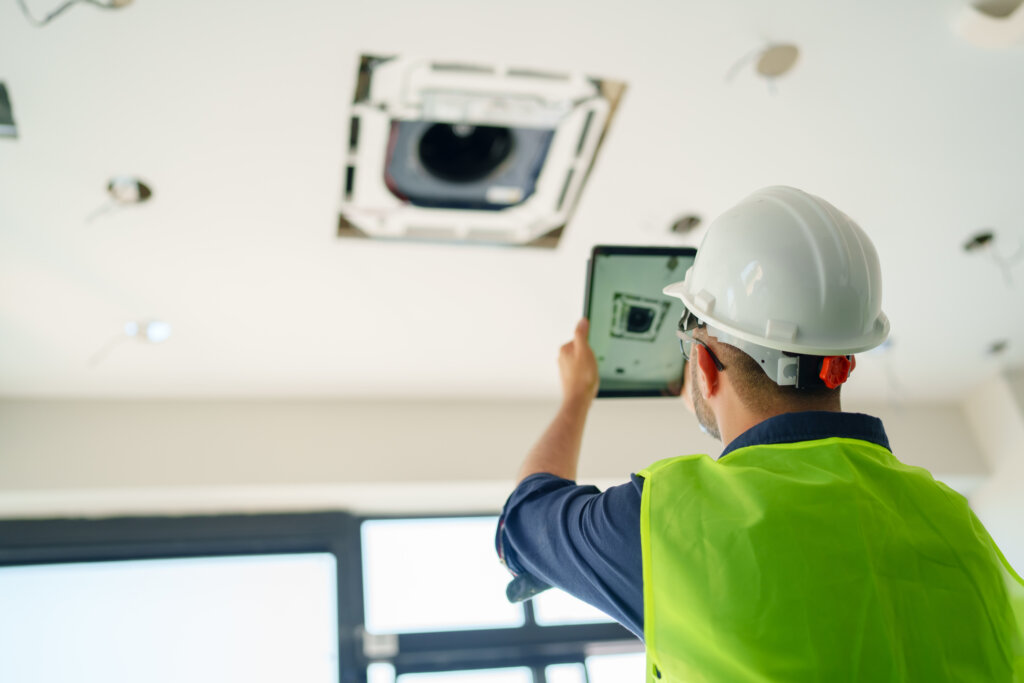Top 7 Electrical Mistakes During TM44 Inspections

A TM44 inspection is a critical assessment for air conditioning systems, ensuring they meet energy efficiency and regulatory standards. However, while the inspection focuses on the system’s performance and TM44 Inspection Cost, another factor often goes unnoticed: the state of the building’s electrical infrastructure.
Many property owners and facility managers unknowingly make costly mistakes with their electrical systems before or during a TM44 inspection. These mistakes can lead to poor inspection results, unexpected repair bills, and even compliance issues.
Ignoring Outdated Electrical Panels
One of the most common issues discovered during TM44 inspections is an outdated or overloaded electrical panel. Many commercial and residential buildings still rely on old fuse boxes or panels that were never designed to handle today’s energy demands.
When an air conditioning system is assessed for energy efficiency, the inspector often notices if the electrical supply is insufficient or poses a safety risk.
How to avoid it:
Have a qualified electrician assess your distribution board well in advance of a TM44 inspection. Upgrading to a modern consumer unit with circuit breakers can ensure safety and compliance.
Poorly Installed Air Conditioning Units
A frequent concern is the use of unsafe electrical setups for air conditioning units. Some installations are performed without professional input, resulting in unprotected wiring, a lack of isolator switches, or incorrect cable sizes.
This not only affects system performance but also raises safety concerns during inspections.
How to avoid it:
Ensure that air conditioning units are installed by certified electricians who understand load requirements and proper wiring techniques. Use appropriately rated cables and install isolators for each unit.
Lack of Proper Earthing and Bonding
Earthing and bonding are essential components for any electrical system, but many older properties or poorly installed systems lack them altogether. This can pose a serious hazard, especially when connected to high-powered air conditioning systems.
Inspectors may flag this as a critical issue, which could delay certification and require immediate correction.
How to avoid it:
Schedule a periodic inspection and testing (EICR) of your electrical system before the TM44 deadline to ensure compliance with regulations. A licensed electrician can ensure that effective earthing and bonding systems are installed and carry out any needed improvements.

Overloaded Circuits and Inadequate Capacity
Adding powerful air conditioning units to an already stretched electrical system often causes overloading. Overloaded circuits are a fire risk and can lead to frequent tripping or even system failure.
During a TM44 inspection, any sign of overloading is likely to be noted as a factor impacting efficiency and safety.
How to avoid it:
Have an electrician calculate the total load on your circuits. If needed, consider upgrading your supply capacity or installing dedicated circuits for AC systems.
Skipping Surge Protection Devices (SPDs)
Air conditioning systems are vulnerable to voltage spikes and surges, which can damage delicate components. Yet many buildings don’t have SPDs installed at the main panel or near key equipment. During inspections, this lack of protection is often noted, particularly when energy efficiency is compromised by system failures or downtime.
How to avoid it:
Install surge protection devices in your electrical system, particularly where sensitive HVAC systems are connected. This not only safeguards equipment but also ensures continuous operation.
Failing to Address Compliance with Wiring Regulations (BS 7671)
The UK’s wiring regulations (BS 7671) set the standards for safe electrical installations. Non-compliance—such as using non-approved components, improper cable routing, or outdated wiring methods—can lead to failed inspections.
In some cases, this can even trigger enforcement action from local authorities.
How to avoid it:
Select electricians with a thorough understanding of the BS 7671 regulations. Consider having an Electrical Installation Condition Report (EICR) carried out before the TM44 inspection.
M44 Inspection Costs: Why Mistakes Can Make It Higher
The cost of a typical TM44 Inspection Birmingham depends on the size and complexity of your building and air conditioning systems. However, failing to address electrical issues beforehand can inflate expenses due to:
- Follow-up inspections after corrections.
- Emergency electrical repairs.
- Delays leading to penalties for non-compliance.
Proactive electrical checks may seem like an extra expense, but they are far cheaper than rushed fixes after a failed TM44.
Final Thoughts:
Electrical systems are the unsung heroes of any air conditioning setup. Failing to address them during TM44 inspections can lead to increased costs and even legal issues.
By avoiding these seven common mistakes—such as outdated panels, poor earthing, overloaded circuits, and skipped maintenance—you can ensure your property passes inspections smoothly.
For electricians, it’s an opportunity to guide clients and offer valuable pre-inspection services. And for property owners, it’s peace of mind knowing their building is safe, efficient, and compliant. So, before your next TM44 inspection, ask yourself: Is your electrical system truly ready?




